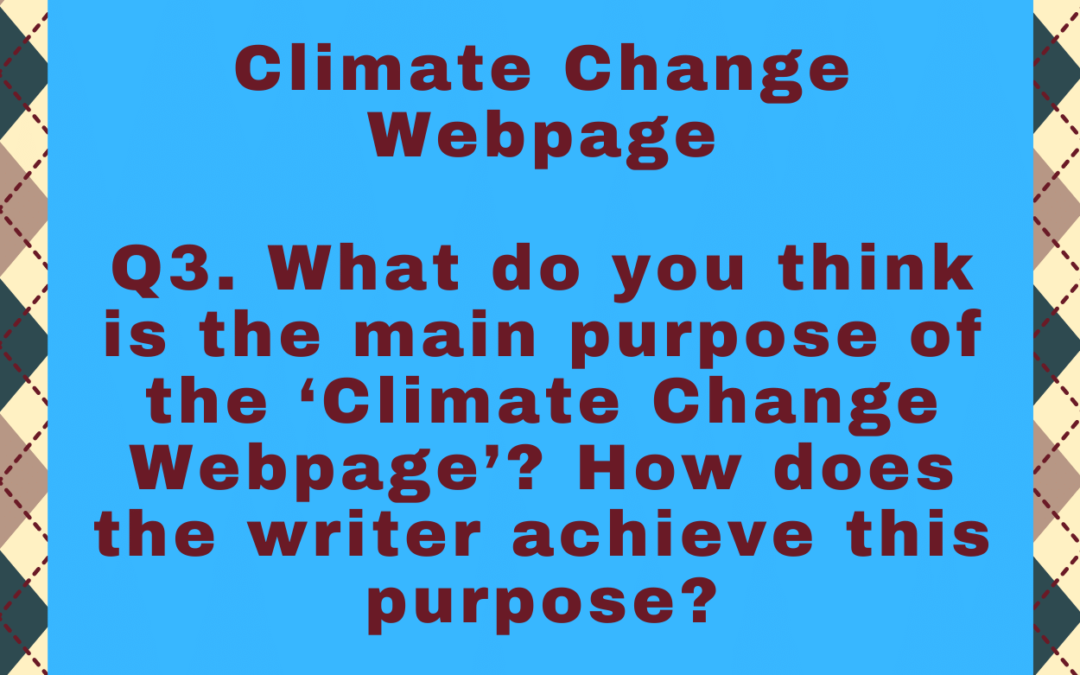Edexcel English IGCSE: Climate Change Webpage
Q3. What do you think is the main purpose of the ‘Climate Change Webpage’? How does the writer achieve this purpose?
In your answer, consider:
- the layout of the article;
- the content of the article;
- the use of language techniques.
You should refer closely to the passage to support your answer. You may use brief quotations.
Edexcel English IGCSE Model Essay by an Expert
In my view, the main purpose of the Climate Change Webpage is to remind people of the dangers of climate change, and to persuade them to take action to reduce its global impact.
The writer of the webpage highlights the dangers of climate change, and thus the urgency of action to reduce the impact. Firstly, the picture of an ice cap is in a prominent position on the page, which draws the reader’s eye. The ice cap looks small and isolated, which reminds the reader of one of the key problems related to climate change: the melting of the ice caps. This fact is relatively well-known, and therefore the picture is all that is needed to remind the reader of this information. The first paragraph contains statistical information about the potentially devastating impact of climate change. The numbers are combined with emotive language, such as “dying” and “extinction”. This powerful combination ensures that the reader is aware of the scale of the problem.
As well as informing about the issue of climate change, the article aims to encourage the reader to take action to help reduce the potential impacts. One technique used by the writer is to emphasise the negligence of the government in implementing technologies which would help to ease the effects of climate change. These technologies are described colloquially as “ready-to-go”, which makes them sound extremely easy to introduce. This ease heightens the laziness and corruption of the government, who are emotively accused of “cowardice”. By emphasising the failure of the government, the writer intends to induce anger in the reader, and thus make them feel that they want to take action themselves.
Another technique used by the writer to encourage the reader to take action is to create a sense of communal responsibility. The use of the second personal plural pronoun throughout the passage unites the reader and the writer (as a representative of the charity, Greenpeace), making them feel that they are on the same team. On a larger scale, the writer evokes the global community: “We’re the last generation that can stop this global catastrophe”. This makes the reader feel important, and that they are part of something special. It also evokes guilt, since the reader feels that they are responsible for the fate of future generations. The evocation of time pressure (“last generation”) is another technique used by the writer. Repeated time adverbs such as “urgently” and “immediately” create a sense of urgency, encouraging the reader to take action fast.
The article does not outline exactly what the reader must do to encourage the government to take action; presumably they will be asked to sign a petition. The priority of the article is to make the reader care enough to click the link labelled “Take Action” at the bottom of the page.



